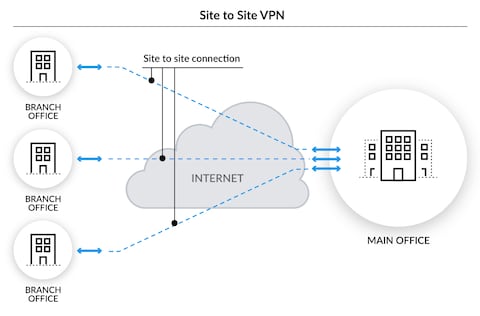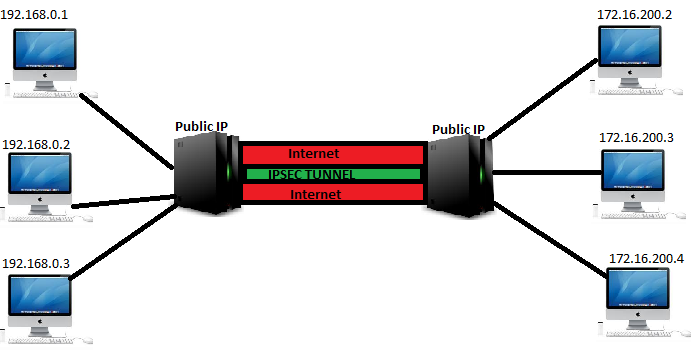Featured
Table of Contents
- – What Is Ipsec Vpn? How Does Ipsec Work In 2023?
- – Overview Of Ipsec
- – Guide To Ipsec Vpns - Nist Technical Series Pu...
- – Understanding Ipsec - Engineering Education (...
- – Ipsec And Ike
- – What Is Ipsec? Definition & Deep Dive
- – What Is Ipsec? - How Ipsec Work And Protocol...
- – What Is Internet Protocol Security Vpn (Ipse...
- – Internet Protocol Security Explained
- – Understanding Vpn Ipsec Tunnel Mode And ...
What Is Ipsec Vpn? How Does Ipsec Work In 2023?
IPsec (Web Protocol Security) is a framework that assists us to secure IP traffic on the network layer. IPsec can safeguard our traffic with the following functions:: by encrypting our information, nobody except the sender and receiver will be able to read our information.

By calculating a hash worth, the sender and receiver will have the ability to check if changes have been made to the packet.: the sender and receiver will confirm each other to make certain that we are actually talking with the device we plan to.: even if a package is encrypted and verified, an opponent might attempt to capture these packets and send them once again.
Overview Of Ipsec
As a framework, IPsec utilizes a variety of procedures to execute the functions I described above. Here's an introduction: Do not fret about all the boxes you see in the photo above, we will cover each of those. To give you an example, for file encryption we can select if we want to use DES, 3DES or AES.
In this lesson I will begin with a summary and after that we will take a closer look at each of the parts. Prior to we can secure any IP packets, we require 2 IPsec peers that develop the IPsec tunnel. To establish an IPsec tunnel, we utilize a procedure called.
Guide To Ipsec Vpns - Nist Technical Series Publications
In this stage, an session is developed. This is likewise called the or tunnel. The collection of criteria that the two gadgets will utilize is called a. Here's an example of two routers that have developed the IKE stage 1 tunnel: The IKE stage 1 tunnel is just utilized for.
Here's a picture of our 2 routers that completed IKE stage 2: When IKE phase 2 is completed, we have an IKE phase 2 tunnel (or IPsec tunnel) that we can use to secure our user data. This user data will be sent through the IKE phase 2 tunnel: IKE builds the tunnels for us however it does not confirm or secure user information.
Understanding Ipsec - Engineering Education (Enged) ...


I will describe these 2 modes in detail later on in this lesson. The entire process of IPsec includes 5 actions:: something needs to activate the production of our tunnels. When you configure IPsec on a router, you use an access-list to inform the router what information to safeguard.
Whatever I discuss below uses to IKEv1. The main purpose of IKE stage 1 is to establish a secure tunnel that we can use for IKE stage 2. We can break down stage 1 in 3 easy steps: The peer that has traffic that must be secured will initiate the IKE phase 1 settlement.
Ipsec And Ike
: each peer needs to prove who he is. 2 commonly used options are a pre-shared secret or digital certificates.: the DH group identifies the strength of the secret that is utilized in the crucial exchange process. The greater group numbers are more secure however take longer to compute.
The last action is that the 2 peers will authenticate each other utilizing the authentication approach that they concurred upon on in the settlement. When the authentication succeeds, we have actually completed IKE phase 1. The end outcome is a IKE phase 1 tunnel (aka ISAKMP tunnel) which is bidirectional.
What Is Ipsec? Definition & Deep Dive
Above you can see that the initiator uses IP address 192. IKE uses for this. In the output above you can see an initiator, this is a special worth that determines this security association.
The domain of analysis is IPsec and this is the first proposal. In the you can discover the characteristics that we desire to utilize for this security association.
What Is Ipsec? - How Ipsec Work And Protocols Used
Considering that our peers concur on the security association to use, the initiator will begin the Diffie Hellman essential exchange. In the output above you can see the payload for the key exchange and the nonce. The responder will likewise send his/her Diffie Hellman nonces to the initiator, our 2 peers can now calculate the Diffie Hellman shared key.
These 2 are used for identification and authentication of each peer. The initiator starts. And above we have the 6th message from the responder with its identification and authentication info. IKEv1 main mode has now completed and we can continue with IKE phase 2. Before we continue with phase 2, let me show you aggressive mode.
What Is Internet Protocol Security Vpn (Ipsec Vpn)?
You can see the change payload with the security association characteristics, DH nonces and the recognition (in clear text) in this single message. The responder now has everything in requirements to produce the DH shared key and sends out some nonces to the initiator so that it can also determine the DH shared secret.
Both peers have everything they require, the last message from the initiator is a hash that is utilized for authentication. Our IKE stage 1 tunnel is now up and running and we are prepared to continue with IKE stage 2. The IKE phase 2 tunnel (IPsec tunnel) will be actually utilized to secure user information.
Internet Protocol Security Explained
It secures the IP packet by determining a hash worth over nearly all fields in the IP header. The fields it leaves out are the ones that can be altered in transit (TTL and header checksum). Let's start with transport mode Transportation mode is basic, it just includes an AH header after the IP header.
With tunnel mode we add a brand-new IP header on top of the original IP packet. This might be useful when you are utilizing personal IP addresses and you require to tunnel your traffic over the Internet.
Understanding Vpn Ipsec Tunnel Mode And ...
Our transportation layer (TCP for example) and payload will be encrypted. It also uses authentication however unlike AH, it's not for the whole IP packet. Here's what it appears like in wireshark: Above you can see the initial IP packet which we are utilizing ESP. The IP header remains in cleartext however everything else is encrypted.
The initial IP header is now likewise encrypted. Here's what it appears like in wireshark: The output of the capture is above is similar to what you have actually seen in transportation mode. The only distinction is that this is a brand-new IP header, you do not get to see the initial IP header.
Table of Contents
- – What Is Ipsec Vpn? How Does Ipsec Work In 2023?
- – Overview Of Ipsec
- – Guide To Ipsec Vpns - Nist Technical Series Pu...
- – Understanding Ipsec - Engineering Education (...
- – Ipsec And Ike
- – What Is Ipsec? Definition & Deep Dive
- – What Is Ipsec? - How Ipsec Work And Protocol...
- – What Is Internet Protocol Security Vpn (Ipse...
- – Internet Protocol Security Explained
- – Understanding Vpn Ipsec Tunnel Mode And ...
Latest Posts
10 Best Vpn Services For 2023 - Top Vpns Compared
Best Business Vpn In 2023 [Ranked & Reviewed]
Best Vpn Services 2023 — Today's Top Picks
More
Latest Posts
10 Best Vpn Services For 2023 - Top Vpns Compared
Best Business Vpn In 2023 [Ranked & Reviewed]
Best Vpn Services 2023 — Today's Top Picks